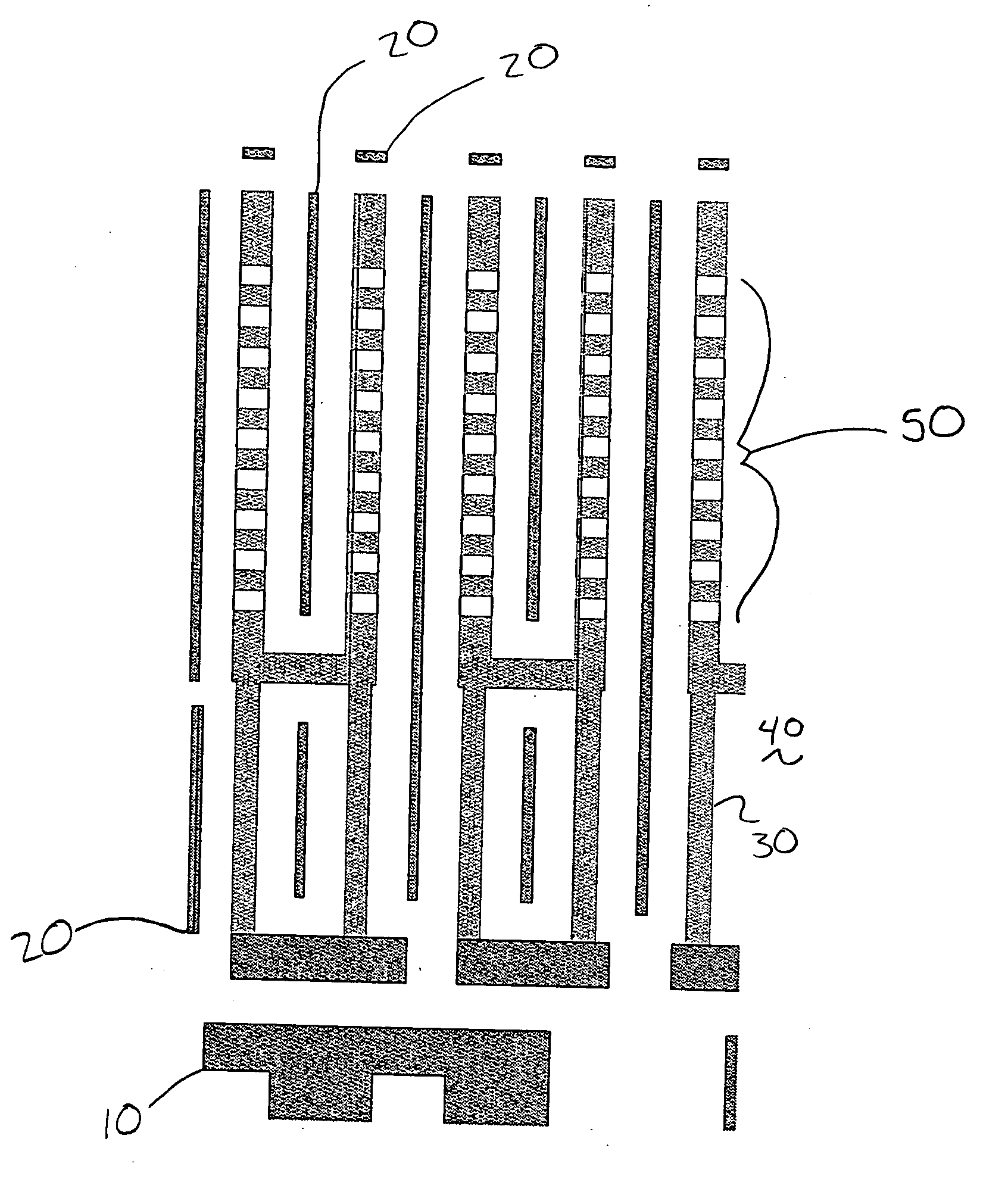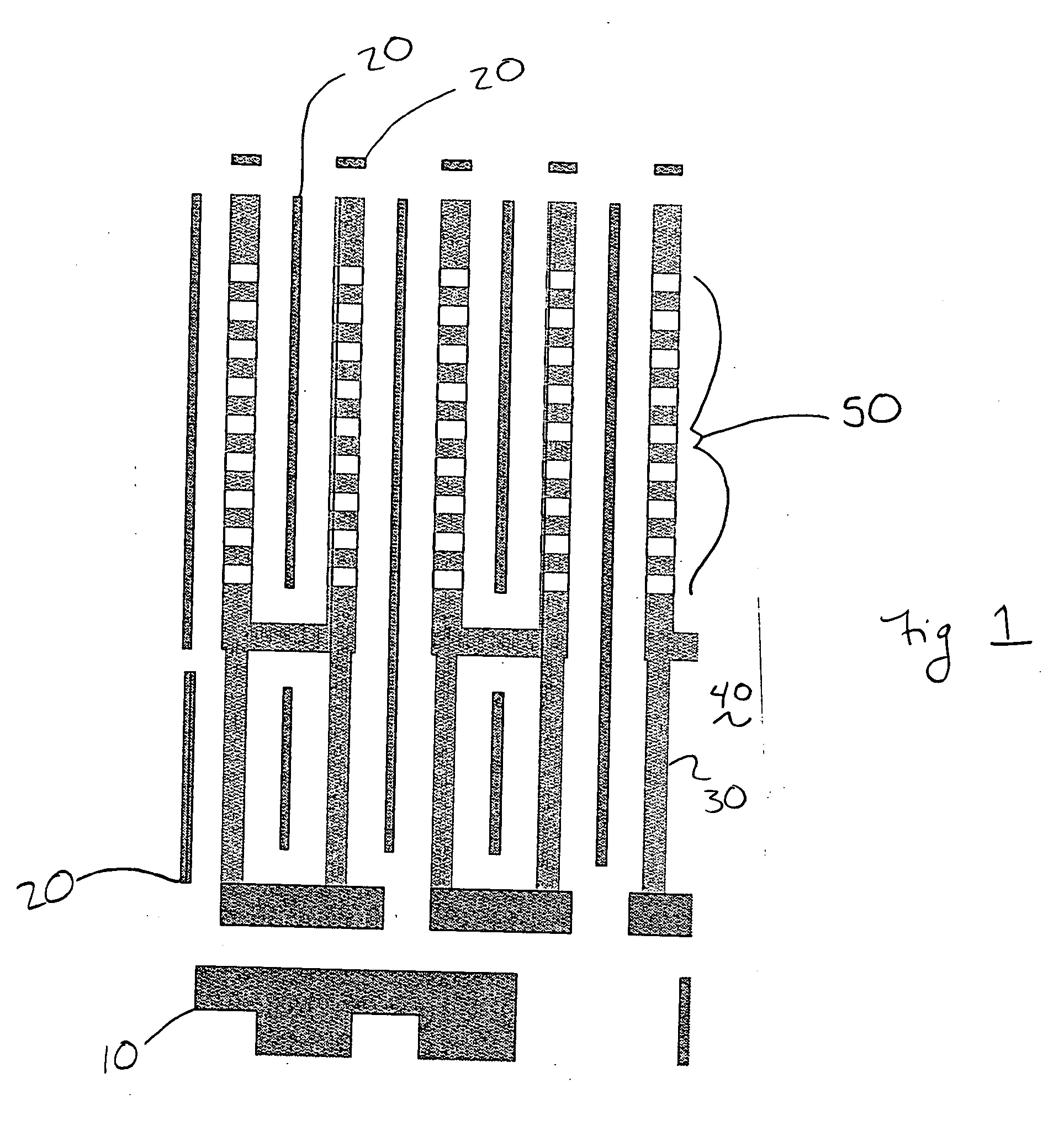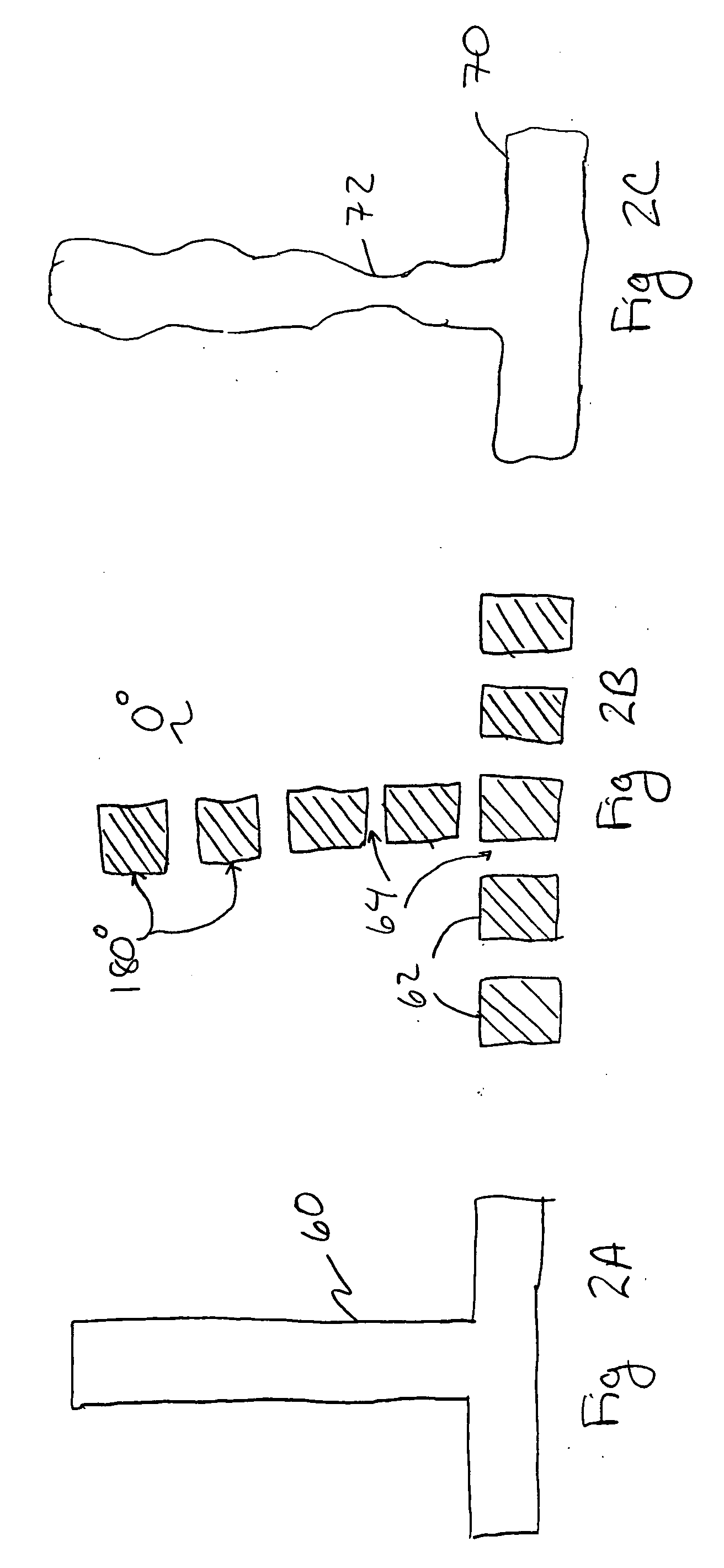Performing OPC on structures with virtual edges
a virtual edge and opc technology, applied in the field of photolithographic processing, can solve the problems of previously impossible to correct for expected errors, and achieve the effect of improving the edge position error (epe) of a feature and enhancing the fidelity of objects
- Summary
- Abstract
- Description
- Claims
- Application Information
AI Technical Summary
Benefits of technology
Problems solved by technology
Method used
Image
Examples
Embodiment Construction
[0014] As indicated above, the present invention is a technique for improving the edge position error of a feature printed on a wafer in a region that corresponds to a virtual edge of a phase-shifter on a mask or reticle.
[0015]FIG. 3A is a greatly enlarged illustration of a phase grating structure that comprises a number of phase-shifting regions 80a, 80b, 80c, that are surrounded by and alternate with a non-phase-shifting region 90. Each of the phase-shifting regions 80a, 80b, 80c, is divided into a number of edge segments that are defined by fragmentation endpoints 84. In the example shown, the vertical edges of the phase-shifting regions 80a, 80b, 80c are divided into two edge segments by using three fragmentation endpoints 84 that are positioned at the corners of the phase-shifting regions and at the center of the vertical edges. The horizontal edges of the phase-shifting regions 80a, 80b, 80c are defined as a single edge segment. However, the horizontal edges could be divided ...
PUM
| Property | Measurement | Unit |
|---|---|---|
| phase-shifting | aaaaa | aaaaa |
| area | aaaaa | aaaaa |
| size | aaaaa | aaaaa |
Abstract
Description
Claims
Application Information
 Login to View More
Login to View More - R&D
- Intellectual Property
- Life Sciences
- Materials
- Tech Scout
- Unparalleled Data Quality
- Higher Quality Content
- 60% Fewer Hallucinations
Browse by: Latest US Patents, China's latest patents, Technical Efficacy Thesaurus, Application Domain, Technology Topic, Popular Technical Reports.
© 2025 PatSnap. All rights reserved.Legal|Privacy policy|Modern Slavery Act Transparency Statement|Sitemap|About US| Contact US: help@patsnap.com



